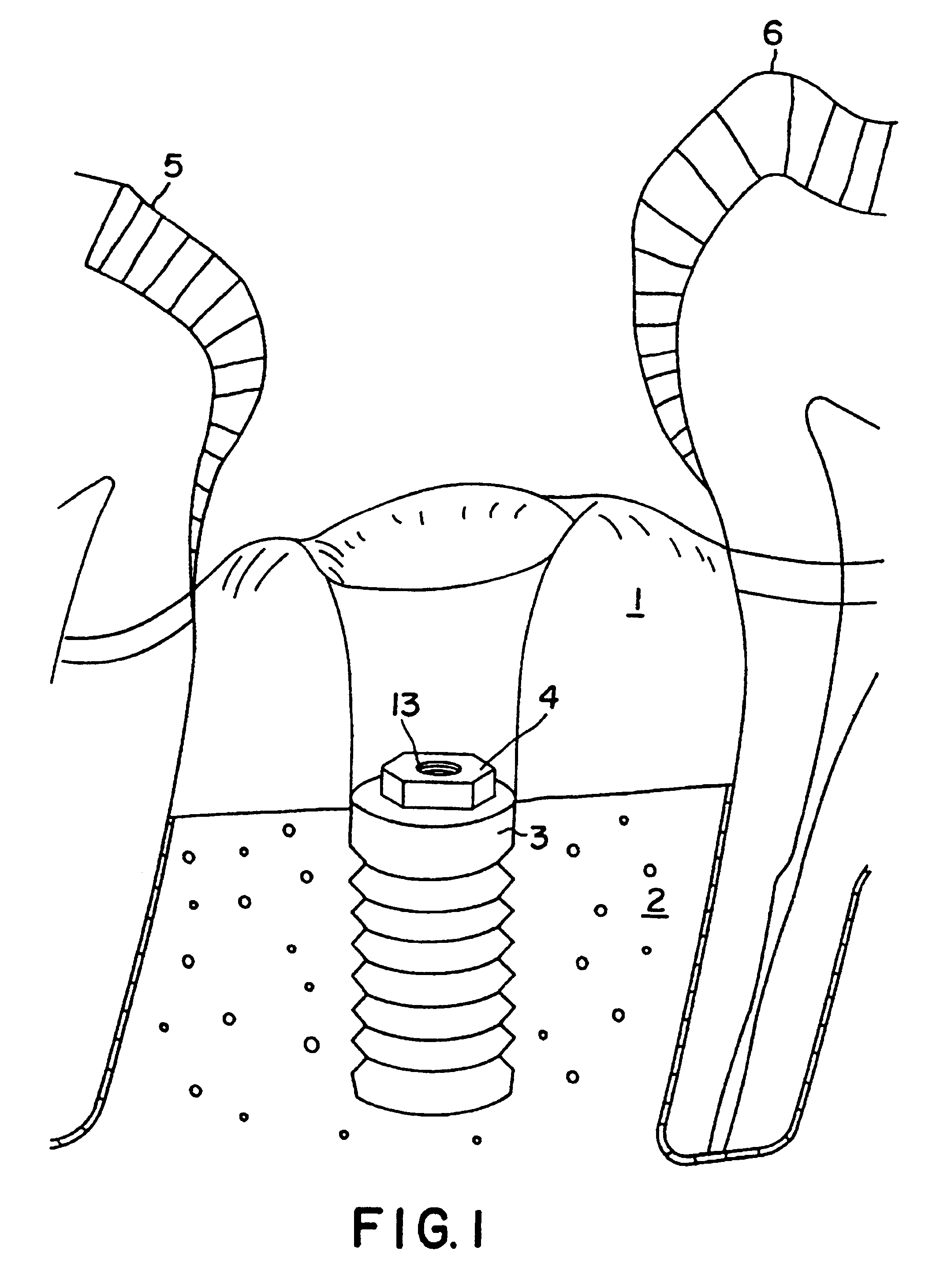Device for the reconstruction of teeth
a technology for teeth and implants, applied in the field of implants and implants for teeth, can solve the problems of large visual and technical demands, immediate negative effect on work quality, and limited scope of commercially available shapes for matching to desired teeth, and achieve the effect of maximizing the acceptance of the subj
- Summary
- Abstract
- Description
- Claims
- Application Information
AI Technical Summary
Benefits of technology
Problems solved by technology
Method used
Image
Examples
Embodiment Construction
FIG. 1 shows the first step in the process of making a tooth reconstruction. The gingiva 1 is prepared surgically between two healthy teeth 5, 6 sufficiently to allow the anchoring of an implant body 3 in the jawbone 2. This implant body 3 has an implant head or socket 4 secured at its gingival end, which serves as an aid to positioning and in this case has the shape of a hexagon. Obviously, other shapes can be used for the same purpose. It will always be necessary, however, to ensure that the degrees of freedom between patrix and matrix are kept to a minimum. The socket 4 serves as an anchoring arrangement for an abutment 7, as shown in the following figures. The implant head 4 has a screw thread 13, for receiving a detachable connection. Obviously, other connection arrangements can also be envisaged. Care must be taken to ensure that the detachable connection will not work loose on its own.
Once healing has occurred following the insertion of the implant body, the abutment 7 may be...
PUM
 Login to View More
Login to View More Abstract
Description
Claims
Application Information
 Login to View More
Login to View More - R&D
- Intellectual Property
- Life Sciences
- Materials
- Tech Scout
- Unparalleled Data Quality
- Higher Quality Content
- 60% Fewer Hallucinations
Browse by: Latest US Patents, China's latest patents, Technical Efficacy Thesaurus, Application Domain, Technology Topic, Popular Technical Reports.
© 2025 PatSnap. All rights reserved.Legal|Privacy policy|Modern Slavery Act Transparency Statement|Sitemap|About US| Contact US: help@patsnap.com



